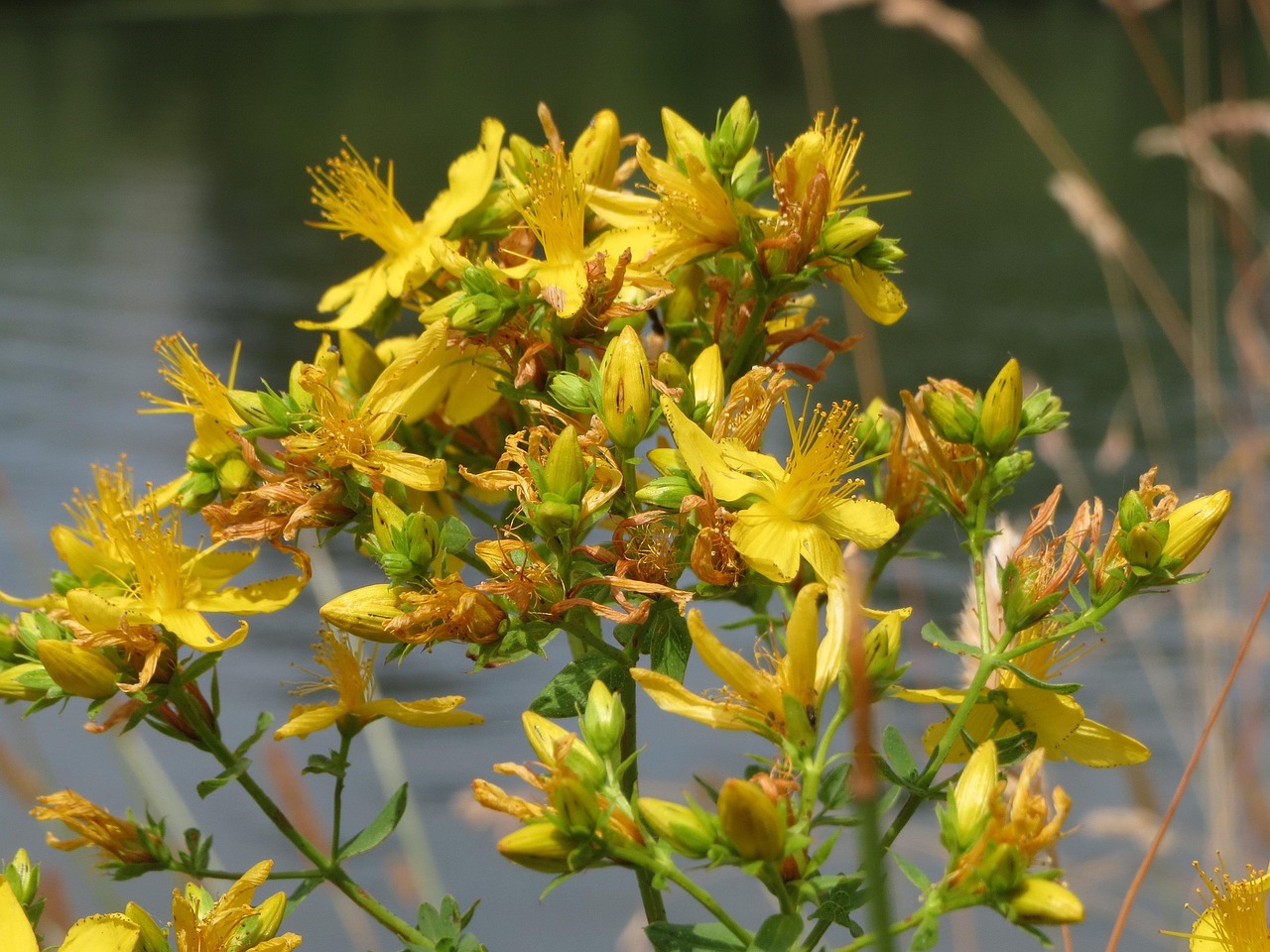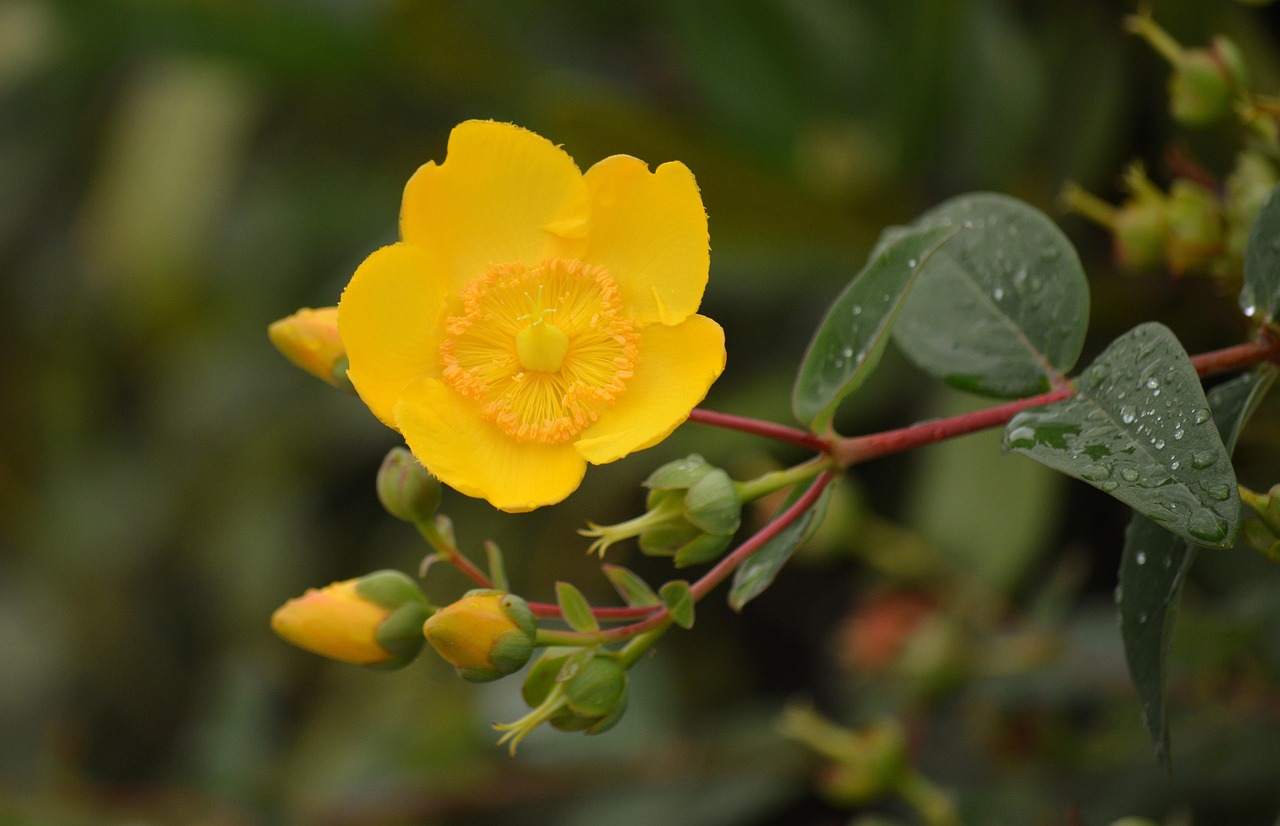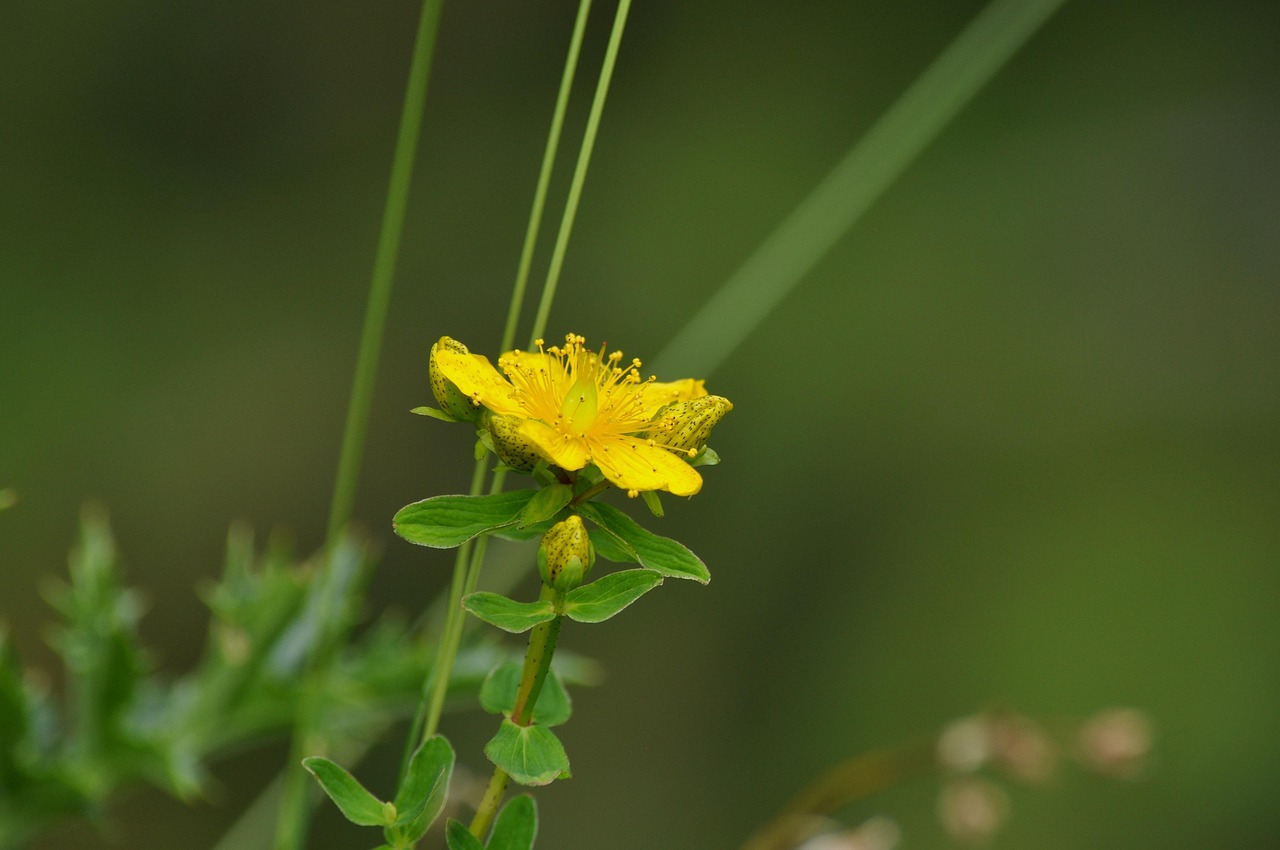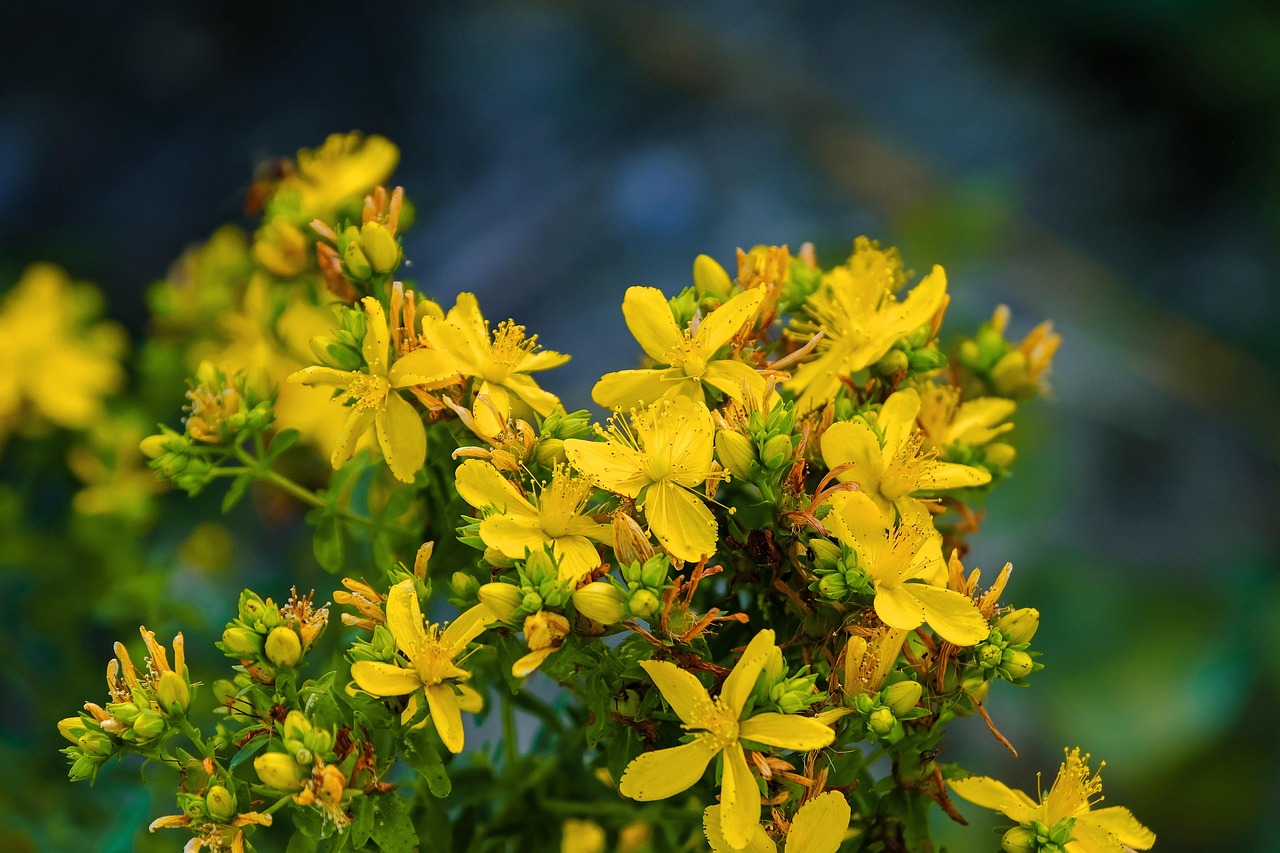St. John’s Wort is a hardy herb that thrives in well-drained soil and full sunlight. To grow it successfully, provide moderate watering, regular pruning, and watch for pests. With the right care, you can cultivate a healthy St. John’s Wort garden.
Understanding St. John’s Wort
St. John’s Wort, scientifically known as Hypericum perforatum, is a perennial herb known for its bright yellow flowers and medicinal properties. Traditionally, it has been used to treat various ailments, particularly depression and anxiety. This plant is not only valued for its therapeutic qualities but also for its resilience and ease of care in garden settings.

This herb typically grows to about 1 to 3 feet tall and produces flowers from late spring to early autumn. Its leaves are oval and have tiny translucent dots that are characteristic of the species. The vibrant yellow flowers are a highlight of the garden, attracting pollinators like bees and butterflies.
St. John’s Wort is native to Europe but has adapted well to many regions around the world. It prefers sunny locations with well-drained soil. Gardeners appreciate its low maintenance needs and ability to thrive in poor soil conditions.
Growing Conditions
To cultivate St. John’s Wort successfully, understanding its preferred growing conditions is essential. Here are key factors to consider:

| Factor | Ideal Conditions |
|---|---|
| Light | Full sun (at least 6-8 hours per day) |
| Soil Type | Well-drained, sandy or loamy soil |
| pH Level | Neutral to slightly acidic (6.0 – 7.0) |
| Watering | Moderate; allow soil to dry between watering |
As indicated in the table, St. John’s Wort thrives best in full sunlight. It requires at least six to eight hours of direct sunlight each day to promote healthy growth and flowering. The plant prefers well-drained soil, which prevents root rot and other moisture-related issues.
The ideal pH level for St. John’s Wort is between 6.0 and 7.0. Regular soil testing can help ensure that the pH remains within this range. Adjustments can be made using lime to raise pH or sulfur to lower it if necessary.
Planting St. John’s Wort
When planting St. John’s Wort, consider starting from seeds or transplants. Seeds can be sown directly into the garden after the last frost or started indoors for an earlier start.

- Choose a location with full sun exposure.
- Prepare the soil by loosening it and mixing in compost or well-rotted manure.
- If starting from seeds, plant them about 1/4 inch deep.
- If using transplants, space them about 12-18 inches apart to allow for growth.
After planting, water the area thoroughly. Keep the soil moist but not soggy until the plants are established. Once they start growing, you can reduce watering frequency.
Caring for St. John’s Wort
Caring for St. John’s Wort involves regular maintenance tasks that promote healthy growth. Here are some essential care tips:
- Watering: Water moderately and allow the soil to dry out between waterings.
- Pruning: Trim back spent flowers and any dead or damaged foliage to encourage new growth.
- Pest Control: Monitor for pests like aphids and spider mites; treat with organic insecticides if necessary.
- Fertilizing: Use a balanced fertilizer during the growing season for optimal health.
With these care tips, your St. John’s Wort plants can flourish, providing both beauty and potential health benefits in your herb garden.

Harvesting St. John’s Wort
Harvesting St. John’s Wort is an essential part of caring for this herb. Proper timing and techniques ensure that you gather the most potent parts of the plant. The flowers are typically harvested during their peak bloom when they are rich in active compounds.
Follow these steps for effective harvesting:
- Wait until the flowers fully open, usually in late spring to early summer.
- Use sharp scissors or pruning shears to cut the flower heads and upper leaves.
- Harvest in the morning when the dew has dried for the best quality.
- Place the cuttings in a basket or bag to avoid crushing the delicate flowers.
After harvesting, it is important to dry the flowers properly to preserve their medicinal properties. Hang them upside down in a cool, dark, and dry place. This method helps retain the essential oils and prevents mold growth.
Storing St. John’s Wort
Once dried, St. John’s Wort can be stored for future use. Proper storage is crucial to maintain its potency and flavor. Here are some tips for effective storage:
- Use airtight containers: Store dried flowers in glass jars or airtight bags to protect them from moisture and air exposure.
- Keep in a cool, dark place: Store containers away from direct sunlight and heat sources to prevent degradation of active compounds.
- Label your containers: Clearly mark the date of harvest and type of herb for easy identification.
When stored correctly, dried St. John’s Wort can last for up to one year without significant loss of quality.
Pests and Diseases
Although St. John’s Wort is relatively hardy, it can still be susceptible to certain pests and diseases. Understanding these threats can help you take preventive measures.
Common Pests
The following pests are known to affect St. John’s Wort:
- Aphids: Small insects that cluster on new growth, sucking sap and weakening the plant.
- Spider mites: Tiny pests that create webbing on leaves, leading to discoloration and leaf drop.
- Whiteflies: Small flying insects that can cause yellowing of leaves and stunted growth.
Disease Management
St. John’s Wort may also face diseases such as:
- Root rot: Caused by overly wet soil; ensure good drainage to prevent this issue.
- Powdery mildew: A fungal disease appearing as a white powdery coating; improve air circulation around plants.
Regularly inspect your plants for any signs of pests or diseases. Early detection allows for prompt treatment, which can include insecticidal soap or organic fungicides as necessary.
Using St. John’s Wort
St. John’s Wort is primarily known for its medicinal uses, but it also has culinary applications. Understanding how to use this herb can enhance its benefits.
Culinary Uses
The flowers of St. John’s Wort can be used in various culinary dishes:
- Herbal teas: Steep dried leaves and flowers in hot water for a calming tea.
- Flavoring salads: Use fresh flowers as a colorful addition to salads.
- Baking: Incorporate dried flowers into baked goods for a unique flavor.
Medicinal Uses
This herb is most renowned for its potential health benefits, including:
- Mood enhancement: Often used as a natural remedy for mild to moderate depression.
- Aid for anxiety: Some studies suggest it may help alleviate anxiety symptoms.
- Anti-inflammatory properties: Used topically, it may help relieve minor burns and cuts.
It is important to consult with a healthcare provider before using St. John’s Wort for medicinal purposes, especially if you are taking other medications, as it may interact with them.
Propagation Techniques for St. John’s Wort
Propagating St. John’s Wort is an excellent way to expand your herb garden. Understanding the various methods available can help you choose the best option for your gardening style. The two most common techniques for propagation are through seeds and cuttings.
Seed Propagation
Starting St. John’s Wort from seeds is a straightforward process. Follow these steps for successful seed propagation:
- Collect seeds from mature flower heads in late summer or early fall.
- Store seeds in a cool, dry place until ready to plant.
- Prepare seed trays filled with a light potting mix.
- Sow seeds on the surface of the soil, lightly pressing them down.
- Water gently to avoid displacing the seeds.
- Cover the trays with plastic to maintain humidity until germination occurs.
- Once seedlings have a few true leaves, transplant them into larger pots or directly into the garden.
Seeds generally germinate within 14 to 30 days, depending on environmental conditions. Ensure they receive ample light during this period.
Cutting Propagation
An alternative method for propagating St. John’s Wort is through cuttings. This method can be quicker and ensures that new plants are genetically identical to the parent plant. Here are the steps:
- Select healthy stems from an established St. John’s Wort plant in late spring or early summer.
- Using sharp scissors, cut a 4-6 inch section from the stem just below a leaf node.
- Remove the lower leaves, leaving only a few at the top to reduce moisture loss.
- Dip the cut end in rooting hormone to encourage root development (optional).
- Plant the cutting in a small pot filled with potting mix.
- Water thoroughly and cover with a plastic bag to create a humid environment.
- Place in indirect sunlight until roots are established, usually within 2-4 weeks.
Companion Planting with St. John’s Wort
Companion planting involves growing different plants close together for mutual benefits. St. John’s Wort can benefit from and provide benefits to nearby plants. Here are some ideal companion plants:
- Basil: Helps repel pests and attracts beneficial insects.
- Oregano: Shares similar growing conditions and helps improve soil health.
- Thyme: Provides ground cover, preventing weeds while enhancing flavor in nearby plants.
When planning your herb garden, consider grouping these companions together to promote healthy growth and deter pests naturally.
Cultural Significance of St. John’s Wort
The history of St. John’s Wort dates back centuries, as it has been used in various cultures for its medicinal properties. Its name comes from its traditional association with St. John the Baptist, as it blooms around his feast day on June 24.
In ancient times, St. John’s Wort was often used in folk medicine for treating wounds and as a remedy for spirits and ailments. It was believed that carrying the herb could ward off evil spirits. Many cultures have also used it in rituals and celebrations, recognizing its significance beyond mere herbal use.
Modern Usage
Today, St. John’s Wort is extensively researched and recognized for its potential benefits in treating mental health conditions. Its active compounds, such as hypericin and hyperforin, are thought to influence neurotransmitter levels in the brain, potentially easing symptoms of depression and anxiety.
It is crucial for individuals considering St. John’s Wort as a supplement to consult healthcare professionals, especially since it can interact with various medications, including antidepressants and birth control pills.
Environmental Considerations
Caring for St. John’s Wort also involves being mindful of environmental factors that can affect its growth and sustainability. Here are some considerations:
- Native Habitat: Understanding that St. John’s Wort is native to Europe can help gardeners replicate its natural environment when planting.
- Biodiversity: Incorporating diverse plant species in your garden can improve ecosystem resilience and attract beneficial wildlife.
- Sustainable Practices: Use organic gardening practices, such as composting and natural pest control, to minimize environmental impact.
By considering these environmental aspects, you can create a thriving herb garden that respects nature while providing valuable resources for health and culinary use.
Challenges in Growing St. John’s Wort
While St. John’s Wort is generally easy to grow, there are several challenges that gardeners may encounter. Being aware of these can help you prepare and manage your herb garden effectively.
Invasive Potential
One significant challenge is the invasive nature of St. John’s Wort in certain regions. In some areas, it can spread rapidly and outcompete native plants. It is important to monitor its growth and take action if it begins to dominate your garden or nearby natural spaces.
Seasonal Sensitivity
St. John’s Wort can also be sensitive to extreme weather conditions. While it enjoys full sun, prolonged periods of drought or excessive rainfall can stress the plant. Here are some tips to mitigate these issues:
- Mulching: Apply a layer of mulch around the base of the plants to help retain moisture and regulate soil temperature.
- Watering during drought: Provide supplemental watering during dry spells to maintain healthy growth.
- Drainage: Ensure proper drainage to prevent root rot during heavy rain periods.
Pest Resistance
While many pests can affect St. John’s Wort, the plant has some natural resistance. However, an outbreak can still occur if conditions are favorable for pests. Regular inspections and early intervention are crucial to maintaining plant health.
Integrating St. John’s Wort into Your Lifestyle
Integrating St. John’s Wort into your lifestyle goes beyond just planting it in your garden. The herb can be incorporated into various aspects of daily life. Here are some ideas:
Culinary Integration
Incorporating St. John’s Wort into your meals can add unique flavors and enhance your diet:
- Herbal Infusions: Use the dried flowers to create herbal infusions and teas that can be enjoyed hot or cold.
- Salad Garnish: Fresh flowers can be used as a colorful garnish in salads, providing both visual appeal and flavor.
- Baking: Add dried flowers to bread or scone recipes for a distinctive taste and aroma.
Health and Wellness
Many people turn to St. John’s Wort for its potential health benefits. Incorporating it into your wellness routine can look like this:
- Mindfulness Practices: Consider using herbal teas made with St. John’s Wort during meditation or yoga sessions to enhance relaxation.
- Aromatherapy: Use essential oils extracted from the plant in diffusers or topical applications for calming effects.
Final Thoughts
Cultivating St. John’s Wort offers both beautiful blooms and potential health benefits. Understanding the care, propagation methods, and challenges associated with growing this herb will empower you to create a thriving garden. By integrating St. John’s Wort into your culinary practices and wellness routines, you can enjoy its versatility and richness.
As you embark on your journey with St. John’s Wort, remember to respect the environment by employing sustainable gardening practices. Monitor growth, stay informed about pest management, and embrace the cultural significance of this remarkable herb. With attention and care, you can enjoy the rewards of a healthy herb garden filled with St. John’s Wort.
Whether you’re growing it for personal use or simply to enhance your garden’s beauty, St. John’s Wort is a valuable addition that brings joy and health benefits to your life.
